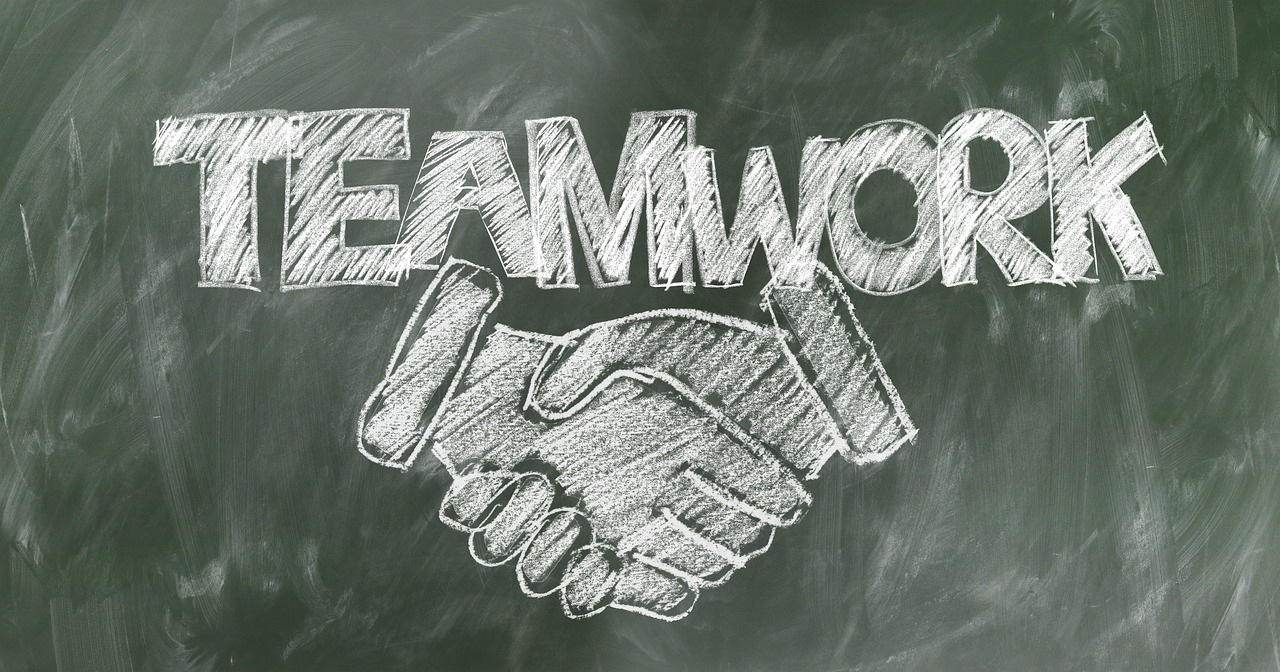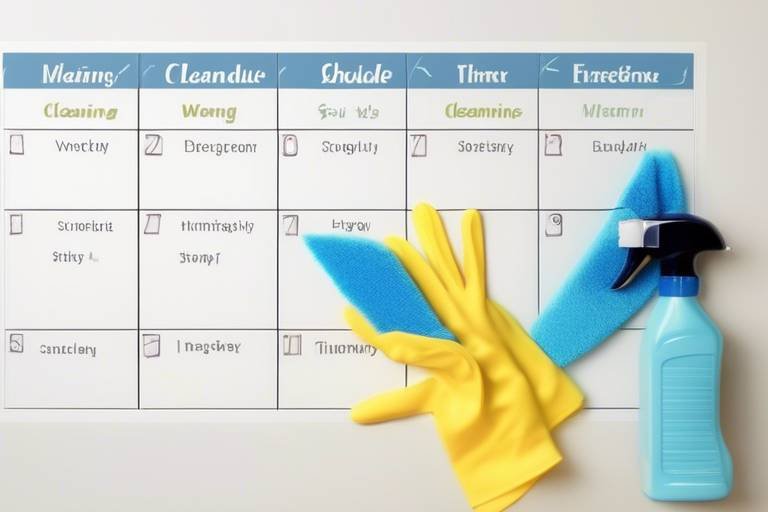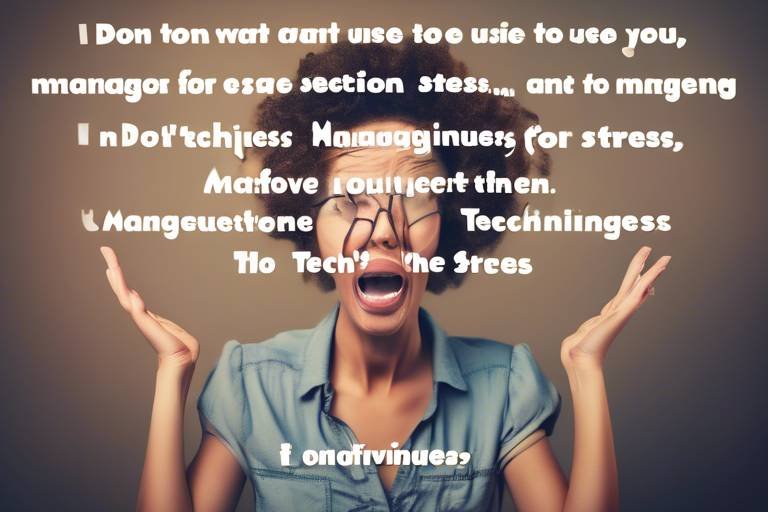10 Strategies for Effective Team Collaboration
In today's fast-paced workplace, the ability to collaborate effectively with your team is crucial for achieving success. By implementing the right strategies, you can enhance communication, boost productivity, and foster a positive working environment. Let's dive into ten key strategies that can help your team work together seamlessly and achieve outstanding results.
First and foremost, establishing clear goals and expectations is paramount. When everyone is on the same page regarding the project's objectives and what is expected of them, it sets a solid foundation for collaboration. This clarity ensures that each team member understands their role in achieving the shared goals.
Encouraging open communication is another vital aspect of effective team collaboration. When team members feel comfortable sharing their thoughts, ideas, and concerns, it creates a culture of transparency and trust. Open communication fosters creativity and enables team members to work together harmoniously towards a common goal.
Defining roles and responsibilities within the team is essential to avoid confusion and conflicts. Clearly outlining who is responsible for what tasks helps streamline workflow, prevent duplication of efforts, and ensure that everyone is working towards the same objectives. This clarity promotes efficiency and minimizes misunderstandings.
Promoting trust and respect among team members is fundamental for building strong collaborative relationships. When team members trust each other's expertise and intentions, it creates a supportive environment where everyone feels valued and respected. Trust is the cornerstone of effective teamwork and paves the way for successful collaboration.
Utilizing collaboration tools can significantly enhance team efficiency and productivity. By leveraging digital platforms for communication, file sharing, and project management, teams can streamline their workflow and stay organized. These tools facilitate real-time collaboration, ensuring that everyone is on the same page and working towards common goals.
Providing constructive feedback is key to helping team members grow and improve their performance. Constructive feedback should be specific, timely, and delivered in a respectful manner. By offering feedback that focuses on areas for improvement rather than criticism, team members can learn and develop their skills, ultimately contributing to the team's overall success.
Embracing diversity and inclusion within the team can lead to greater innovation and creativity. Valuing different perspectives, backgrounds, and experiences fosters a culture of inclusivity where everyone feels empowered to contribute their unique insights. Embracing diversity enriches the team's problem-solving abilities and promotes a more dynamic work environment.
Celebrating achievements and milestones, no matter how big or small, is essential for boosting team morale and motivation. Recognizing the hard work and accomplishments of team members fosters a sense of pride and accomplishment. Celebrating successes together strengthens team cohesion and reinforces a positive team culture.
Regularly evaluating and adjusting collaboration strategies is crucial for continuous improvement. By periodically reviewing the team's performance, identifying areas for enhancement, and making necessary adjustments, teams can adapt to changing circumstances and grow together. This ongoing evaluation ensures that the team remains agile and responsive to challenges.
In conclusion, effective team collaboration is the cornerstone of success in today's dynamic work environment. By implementing these ten strategies, teams can enhance communication, foster trust, and achieve outstanding results together. Embrace collaboration, communicate openly, and celebrate achievements to create a cohesive and high-performing team.

Establish Clear Goals and Expectations
In today's workplace, successful team collaboration is essential for productivity. Explore these ten strategies to enhance teamwork, communication, and efficiency within your organization.
Setting specific objectives and outlining expectations for each team member fosters a shared understanding of the project's purpose and desired outcomes. By clearly defining goals, team members can align their efforts towards a common target, increasing focus and motivation. It's like setting sail on a ship with a clear destination in mind, ensuring everyone is working towards the same end goal.

Encourage Open Communication
In today's workplace, successful team collaboration is essential for productivity. Explore these ten strategies to enhance teamwork, communication, and efficiency within your organization.
Open communication is the cornerstone of effective teamwork. When team members feel free to express their ideas, provide feedback, and voice concerns, it creates a dynamic environment where creativity thrives and collaboration flourishes. By encouraging open communication, you foster a culture of transparency and trust among team members.
Imagine a team as a symphony orchestra where each member plays a vital role. Without open communication, it's like playing different tunes without ever synchronizing, resulting in chaos. However, when communication flows freely, it's akin to harmonious music where every instrument complements the others, creating a masterpiece.
One way to promote open communication is to hold regular team meetings where everyone has the opportunity to share updates, ideas, and challenges. Additionally, creating digital channels like chat groups or project management tools allows for real-time communication and collaboration, breaking down barriers and ensuring no valuable insights get lost in the shuffle.
Moreover, active listening is key to fostering open communication. When team members feel heard and understood, they are more likely to contribute their thoughts and ideas. Encouraging a culture of listening and valuing everyone's input cultivates a sense of belonging and mutual respect within the team.
By embracing open communication, you pave the way for innovative solutions, efficient problem-solving, and a cohesive team that works towards a common goal with shared understanding and purpose.

Define Roles and Responsibilities
In today's workplace, successful team collaboration is essential for productivity. Explore these ten strategies to enhance teamwork, communication, and efficiency within your organization.
When it comes to effective team collaboration, defining clear roles and responsibilities is like creating a roadmap for success. Just as each player in a sports team has a specific position and role to play, assigning roles within a team ensures that everyone knows what is expected of them. This clarity helps in avoiding confusion, prevents duplication of efforts, and minimizes conflicts over tasks.
Imagine a well-oiled machine where every gear knows its function and how it contributes to the overall movement. Similarly, when team members have clearly defined roles and responsibilities, the team operates smoothly, with each member understanding their part in achieving the collective goal.
One way to establish roles and responsibilities is by creating a responsibility matrix that outlines who is accountable for what tasks. This matrix can be a valuable reference point for team members to understand their individual duties and how they intersect with others'. By clearly defining roles, teams can work cohesively towards a common objective without stepping on each other's toes.
Moreover, assigning roles based on each team member's strengths and expertise can lead to a more efficient workflow. Just as a symphony orchestra assigns different instruments to musicians based on their skills, aligning responsibilities with individual strengths can harmonize the team's performance and output.
However, it's crucial to remember that roles and responsibilities are not set in stone. As projects evolve and circumstances change, it's essential to periodically reassess and adjust these roles to ensure alignment with the team's goals and the project's needs. Flexibility in role assignments allows for adaptation and optimization, maximizing the team's collaborative potential.
In conclusion, defining roles and responsibilities within a team is like creating a blueprint for success. It establishes clarity, minimizes confusion, and optimizes efficiency by ensuring that each team member knows their part in achieving the shared objectives. By assigning roles thoughtfully and periodically reviewing and adjusting them, teams can enhance their collaborative efforts and work towards achieving greater success together.
Q: How often should roles and responsibilities be reassessed within a team?
A: It's recommended to reassess roles and responsibilities whenever there are significant changes in the project scope, team composition, or objectives. Regular check-ins can also help ensure that roles remain aligned with the team's evolving needs.
Q: What should be done if there is a conflict over roles and responsibilities within a team?
A: In case of conflicts, it's important to address the issue openly and transparently. Encouraging open communication and seeking mutual understanding can help resolve conflicts and realign roles to better suit the team dynamics.

Promote Trust and Respect
Trust and respect are the foundation of successful team collaboration. Just like a sturdy building needs a solid base, a team needs trust and respect to thrive. When team members trust each other, they can rely on one another to deliver on their commitments and work towards common goals. Respect, on the other hand, ensures that everyone's opinions and contributions are valued, creating a harmonious and supportive environment.
Imagine a team as a symphony orchestra, with each member playing a different instrument. For the music to sound beautiful and cohesive, every musician needs to trust that their colleagues will play their parts well and respect each other's talents. Similarly, in a team setting, trust and respect enable individuals to collaborate seamlessly, harmonizing their efforts towards a shared vision.
Building trust and respect requires open communication and active listening. Team members should feel comfortable expressing their thoughts and concerns without fear of judgment. By fostering an environment where everyone's voice is heard and respected, trust flourishes, leading to stronger bonds and more effective collaboration.
Trust is like a fragile glass sculpture – once broken, it's challenging to restore. Therefore, it's crucial to nurture trust and respect continuously within the team. Encouraging transparency, honesty, and reliability among team members cultivates a culture of trust, where individuals feel safe to take risks, share ideas, and support each other.

Utilize Collaboration Tools
In today's workplace, successful team collaboration is essential for productivity. Explore these ten strategies to enhance teamwork, communication, and efficiency within your organization.
Collaboration tools are the backbone of modern teamwork, enabling seamless communication and efficient project management. By utilizing these tools effectively, teams can overcome geographical barriers and work together seamlessly, regardless of their physical location.
One popular collaboration tool is Slack, which offers real-time messaging, file sharing, and integration with other productivity apps. This platform allows team members to communicate instantly, share updates, and collaborate on projects in a centralized space.
Another essential tool is Google Workspace, formerly known as G Suite, which provides a suite of cloud-based applications such as Google Docs, Sheets, and Drive. These tools enable real-time collaboration on documents, spreadsheets, and presentations, allowing team members to work together simultaneously and track changes efficiently.
Project management tools like Trello and Asana are also valuable for organizing tasks, setting deadlines, and tracking progress. These platforms offer visual boards, task assignments, and progress tracking features that enhance team coordination and project visibility.
Moreover, video conferencing tools like Zoom and Microsoft Teams facilitate virtual meetings, screen sharing, and remote collaboration. These tools enable face-to-face interactions, even when team members are miles apart, fostering a sense of connection and teamwork.
By leveraging a combination of collaboration tools tailored to your team's needs, you can streamline communication, enhance productivity, and foster a culture of collaboration that transcends physical boundaries.

Provide Constructive Feedback
In today's workplace, successful team collaboration is essential for productivity. Explore these ten strategies to enhance teamwork, communication, and efficiency within your organization.
Constructive feedback is like a compass guiding a ship through stormy seas. It's essential for steering the team towards success and improvement. When offering feedback, focus on specific behaviors or actions, be specific about what went well and what needs improvement. Constructive feedback should be given in a timely manner to address issues promptly and help team members grow professionally. Remember, feedback is not about criticism but about supporting each other's development.

Embrace Diversity and Inclusion
In today's workplace, successful team collaboration is essential for productivity. Explore these ten strategies to enhance teamwork, communication, and efficiency within your organization.
Embracing diversity and inclusion within a team is like having a vibrant garden with a variety of flowers. Each member brings a unique perspective, background, and set of skills to the table, enriching the team's collective knowledge and creativity. By valuing and celebrating these differences, teams can cultivate an environment where everyone feels heard, respected, and included.

Celebrate Achievements and Milestones
In today's workplace, successful team collaboration is essential for productivity. Explore these ten strategies to enhance teamwork, communication, and efficiency within your organization.
Recognizing and celebrating team achievements, both big and small, boosts morale, motivation, and a sense of accomplishment among team members. By acknowledging the hard work and dedication of individuals within the team, you create a positive atmosphere that encourages continued success.
Imagine a team as a ship sailing towards a distant island. Each milestone achieved is like a beacon lighting up the path, guiding the crew through rough waters. Celebrating these milestones not only marks progress but also serves as a reminder of how far the team has come together.
One way to celebrate achievements is through regular team meetings or gatherings where accomplishments are highlighted and praised. This not only boosts team spirit but also reinforces the value of each team member's contribution to the collective goal.
Additionally, setting up a recognition program or rewards system can further motivate team members to strive for excellence. Whether it's a simple shoutout in a meeting or a more elaborate award ceremony, acknowledging achievements publicly fosters a sense of pride and satisfaction.
Moreover, celebrating milestones can also serve as a reflection point, allowing the team to assess progress, identify strengths, and pinpoint areas for improvement. It's an opportunity to pause, reflect on the journey so far, and re-energize for the challenges ahead.
Remember, celebrating achievements and milestones is not just about the destination but also about appreciating the journey and the collective effort that goes into reaching each goal. It creates a sense of camaraderie, instills a positive culture, and motivates team members to continue working together towards shared success.
Stay tuned for the frequently asked questions section at the end of this article for more insights and answers to common queries about effective team collaboration strategies.

Regularly Evaluate and Adjust Strategies
In today's workplace, successful team collaboration is essential for productivity. Explore these ten strategies to enhance teamwork, communication, and efficiency within your organization.
Regular evaluation and adjustment of collaboration strategies are key to maintaining a high level of effectiveness within a team. By periodically assessing the team's performance, strengths, and areas for improvement, you can ensure that your collaboration efforts are on track and aligned with the project goals.
One effective way to evaluate strategies is to gather feedback from team members through surveys, one-on-one meetings, or group discussions. This feedback can provide valuable insights into what is working well and what may need to be adjusted or improved.
Additionally, monitoring key performance indicators (KPIs) related to team collaboration, such as meeting deadlines, resolving conflicts, and achieving project milestones, can help identify trends and areas that require attention.
Once the evaluation is complete, it is important to take action and make necessary adjustments to the collaboration strategies. This may involve reallocating responsibilities, introducing new tools or processes, or providing additional training and support to team members.
By regularly evaluating and adjusting strategies, teams can adapt to changing circumstances, improve their performance, and ultimately achieve greater success in their collaborative endeavors.
Q: How often should team collaboration strategies be evaluated?
A: It is recommended to evaluate team collaboration strategies on a regular basis, such as quarterly or bi-annually, to ensure continuous improvement and alignment with project goals.
Q: What are some common challenges in adjusting collaboration strategies?
A: Common challenges in adjusting collaboration strategies include resistance to change, lack of clear communication, and difficulty in identifying the root causes of inefficiencies.
Q: How can team leaders encourage team members to provide feedback on collaboration strategies?
A: Team leaders can encourage feedback by creating a safe and open environment for sharing opinions, actively listening to team members' suggestions, and demonstrating the value of constructive criticism in driving improvement.
Frequently Asked Questions
- What is team collaboration?
Team collaboration is the process of working together with a group of individuals to achieve a common goal or complete a project. It involves sharing ideas, responsibilities, and tasks in a coordinated effort to enhance productivity and efficiency.
- Why is effective team collaboration important?
Effective team collaboration is crucial in today's workplace as it promotes innovation, enhances communication, and improves overall productivity. By fostering a collaborative environment, organizations can leverage the diverse skills and strengths of team members to achieve success.
- How can clear goals benefit team collaboration?
Clear goals provide team members with a sense of direction and purpose, helping them align their efforts towards a common objective. When everyone understands the project's goals and expectations, collaboration becomes more focused and efficient.
- What role does feedback play in team collaboration?
Feedback is essential in team collaboration as it allows team members to learn from their experiences, improve their performance, and make necessary adjustments. Constructive feedback fosters growth, strengthens relationships, and contributes to the overall success of the team.
- How can diversity and inclusion impact team collaboration?
Embracing diversity and inclusion within a team brings together a variety of perspectives, ideas, and experiences. This diversity fosters creativity, innovation, and a more inclusive work environment, ultimately enhancing collaboration and problem-solving capabilities.



















